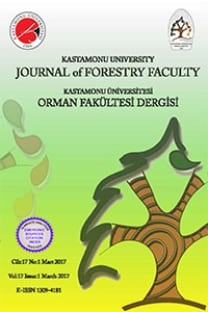Ecology of the Mexican Abies durangensis Martínez
-
Ecology of the Mexican Abies durangensis Martínez
Sierra Madre Occidental, Conservation Red list,
___
- CITES, 2012, http://www.cites.org/esp/resources/species.html.
- CONAFOR. Comisión Nacional Forestal. 2004. Inventario Nacional Forestal y de Suelos.
- Farjon A. 1990. Pinaceae: drawings and descriptions of the genera Abies, Cedrus, Pseudolarix, Keteleeria, Nothotsuga, Tsuga, Cathaya, Königstein: Koeltz Scientific Books. Larix and Picea.
- Florin R. 1963. The distribution of conifer and taxad genera in time and space. Acta Horti Bergiani. 20:121–312.
- García A.A. 2008. Vegetación y flora de un bosque relictual de Picea chihuahuana Martínez del Norte de México. Polibotánica. 25:45-68.
- Hutchinson M.F. 2004. Anusplin Version 4.3. Centre for Resource and Environmental Studies. The Australian National University, Canberra, Australia.
- Hutchinson M.E. 1991. Continent-wide data assimilation using thin plate smoothing splines. Pages 104-113 in JD Jasper, ed. Data assimilation systems. Bureau of Meteorology, Melbourne.
- IUCN. 2011. IUCN Red List of Threatened Species. Version 2011.2.
. - Liu T. 1971. A Monograph of the Genus Abies. Department of Forestry, College of Agriculture. National Taiwan University, Taipei, Taiwan, China. 608 p.
- Martínez M. 1948. Las Pináceas de México. Anales del Instituto de Biología. No. 1 Tomo XIX. Instituto de Biología. México D. F. pp: 11- 107.
- Martínez M. 1953. Las Pináceas Mexicanas. Secretaría de Subsecretaría de Recursos Forestales y de Caza. México D. F., México. 366 p. y Ganadería.
- NOM-059-SEMARNAT-2010. 2010. Secretaría de Medio Ambiente y Recursos Naturales. Segunda sección Diario Oficial de la Federación 30 Diciembre 2010.
- Rehfeldt G.E., Crookston N.L., Warwell M.V., Evans J.S. 2006. Empirical analyses of plant-climate relationships for the Western United States. Int. J. Plant Sci. 167(6):1123–1150.
- Rehfeldt G.E. 2006. A spline model of climate for the Western United States. Gen. Tech. Rep. RMRS-GTR-165. Agriculture, Forest Service, Rocky Mountain Research Station, Fort Collins, Colorado, USA.
- Ricketts T.H., Dinerstein E., Olson D.M., Loucks C.J., et al. 1999. Terrestrial Ecoregions of North America: a Conservation Assessment. Island Press, Washington DC.
- Rushforth K.D. 1987. Conifers. New York: Facts on File. 232p.
- Silba J. 1986. An international census of the Coniferae. Phytologia memoir no. 8. Corvallis, OR: H.N. Moldenke and A.L. Moldenke.
- Silva-Flores R. and Wehenkel C. 2012. The hollow-shaped pattern of tree species diversity with climatic factors on the Sierra Madre Occidental, México. Unpublished.
- Zhang, J., Oliver W. W., Ritchie, MW 2007. Effect of stand densities on stand dynamics in white fir (Abies concolor) forests in northeast California, Management 244: 50–59. Ecology and
- ISSN: 1303-2399
- Yayın Aralığı: 3
- Başlangıç: 2001
- Yayıncı: Kastamonu Üniversitesi
Heterobasidion Infection in Abies nordmanniana ssp. bornmülleriana Stands in Kastamonu Province
A. LEHTIJARVI, H. T. Doğmuş LEHTİJARVİ, S. ÜNAL, M. KARADENİZ, A. G. KAYA ADAY, F. OSKAY
Study on Cone Formation Stage of Caucasian Fir (Abies nordmanniana ssp. nordmanniana)
DENİZ GÜNEY, Şemsettin KULAÇ, İBRAHİM TURNA
The Fir of Numidia: a Threatened Species
Salima BENNADJA, Yasmina TLILI AIT KAKI
Günal ŞAHİN, Ömer KARADEMİR, Sedat AKIN
The use of Fir Taxa in Planting Design
MÜBERRA PULATKAN, Mustafa VAR, ELİF KAYA ŞAHİN
Optimum Structures of Black Sea Region Fir Forests
Valeriu Norocel NICOLESCU, Hendrik SCHUBERT, Constantin VASILICA, Aurica PATRAUCEAN, Alexandra PRICOP, George CIUBOTARU, Alexandru NITULESCU
